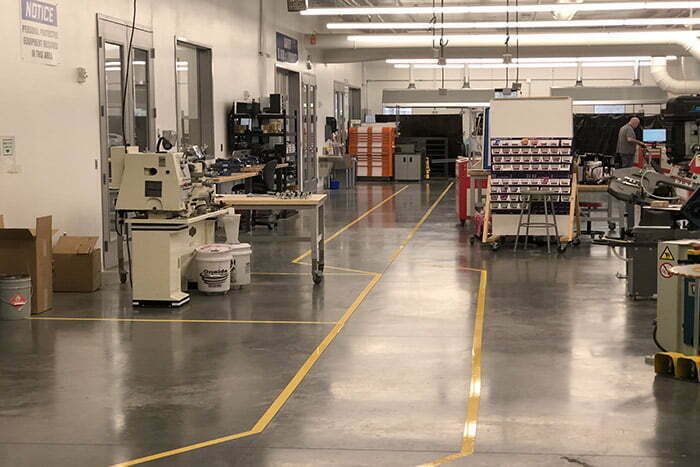
If you hate sitting in a chair eight hours a day learning, you’ll love the Center for Advanced and Emerging Technology at Metropolitan Community College. That’s a message Dr. Thomas Pensabene uses to entice potential students to check out MCC’s advanced prototype design degree, which is offered at the center.
“No two days are the same,” says Dr. Pensabene, associate vice president of workforce and IT innovation at MCC.
The Center for Advanced and Emerging Technology (CAET) is a 9,600 square foot prototyping lab, flexible learning center, and magnet for industry partnerships located on MCC’s Fort Omaha campus. CAET houses 3D printers, 3D scanners, computer-numerical-controlled plasma cutters, laser cutters, vinyl cutters, mills, and other devices necessary for prototyping.
A Partnership Between Higher Education and Industry
Opened in 2017, the CAET represents a unique partnership between higher education and industry. At CAET, industry professionals work side-by-side with students and MCC faculty to bring prototypes to life, from design to construction and evaluation. Students develop a highly in-demand skillset—prototyping, or the development of real-life models to test and evaluate designs—through hands-on experience with state-of-the-art technology and contemporary workflow design. In return, industry partners receive office space and the chance to spot, nurture, and recruit future talent.
“When you find people who put their hands on something and have actually built something, that experience is exponentially better,” says Curt Brannon, founder and CEO of Sympateco, a manufacturer that supplies national franchises such as Sport Clips and Complete Nutrition with cabinetry and other items. “The practical aspect of this place is just awesome. And I trust that, by the way, more than someone who maybe went to some super school and got a good grade.”

Sympateco Invests in the Center for Advanced and Emerging Technology
For the past two years, Sympateco has made what Dr. Pensabene calls a “priceless” investment in the CAET, working closely with over 25 students and prototype design instructor Michael Guericke. The relationship between Sympateco and MCC will continue to strengthen, as the Mini-Sympateco Prototype Lab is currently undergoing construction in a wing of the CAET.
Sympateco Vice President Mary Smolsky says the advanced prototyping design program at CAET has been helpful in identifying the kind of practical engineering talent that would fit well within her organization.
“We can try to hire engineers that have gone to school for engineering,” Smolsky says. “But if they’re not okay going out and firing up the machine and building it themselves to understand where it’s gonna break, it’s really hard to teach them how to design for construction.”
While there is not a specific job called prototype design, companies need a skill called prototyping, Dr. Pensabene says. And the need is critical. In fact, although advanced prototype design is a two-year degree, many students are offered jobs during their first year.
A Sea-Change in Attitudes Toward the Trades
Moreover, the CAET represents a sea-change in education, a shift toward practical, hands-on, collaborative experience, and a celebration of the respectability of the trades.
“The world for so long has kind of pulled away from the idea that people can actually sustain life with a trade. And that bothers me,” Brannon says. “That really bothers me.”
Aside from the working relationship developed between Sympateco and MCC, it’s clear Brannon maintains an emotional connection to the CAET, its mission and purpose.
“I think this is just the beginning,” Brannon says. “This is the best foundation for the way certain people think. I was a thinker that would have no problem with being in this environment. When you’re wired that way, you need environments like this, and you need support.”
Smolsky, meanwhile, praises the versatility of the advanced prototyping design degree offered at the CAET.
“Just because it’s focused around manufacturing doesn’t mean you have to end up in manufacturing,” she says. “Let us teach you the thought process of what we’re trying to do and you can apply that to any industry. This is a good spot for: ‘I really don’t know what I want to be when I grow up. But help me get there.’”
“We’re fitting square pegs in round holes all the time,” Dr. Pensabene adds.
The CAET is located at 5300 N. 30th Street on the MCC Fort Omaha campus and is open to the public for a small fee (email prototypelab@nullmccneb.edu for more information). For more information about MCC’s advanced prototype design program, go here.
